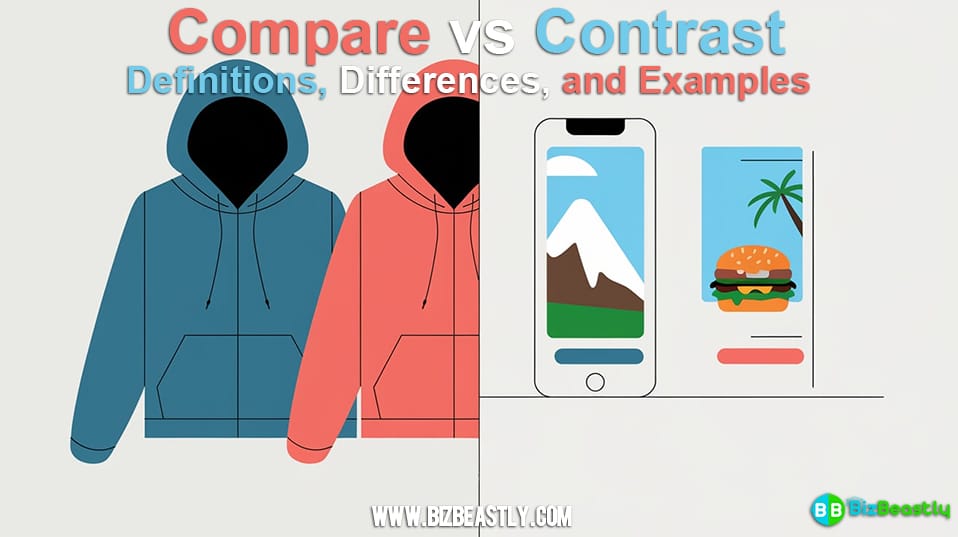Understanding the correct compare vs contrast distinction is critical to improving your analytical skills and communicating more effectively. Whether you’re writing a persuasive essay, engaging in casual talks, or making business decisions, knowing when to use compare and when to use contrast can make all the difference. This article will dive into the specifics of both terms, with real-world examples to illustrate their uses and provide scenario-based examples that will further enhance your understanding. Ultimately, you’ll be better equipped to employ both terms accurately and efficiently in your writing and speech.

The words “compare” and “contrast” frequently appear in everyday conversations, yet they’re often misunderstood or used incorrectly. People tend to mix them up, thinking they mean the same thing. However, both words play distinct roles, especially when expressing similarities and differences between two or more items.
Compare vs Contrast: The Definitions Unveiled
Before we move deeper into the subtleties of compare vs contrast, let’s establish a clear understanding of each term.
Compare: Finding the Similarities
When we compare, we are focusing on the similarities between two or more things. Comparisons are made to align two or more items, people, ideas, or situations based on common traits. For example, in regular chats, you may compare two restaurants based on their food quality or two cities based on their weather. Essentially, you’re looking for how these things resemble each other.
In daily discussions, comparisons help us make decisions and arrive at conclusions. For example, when comparing smartphone features, we might find similarities in camera quality or battery life, which makes it easier to decide which device to buy.
Scenario Example: Comparing Cars for a Purchase Decision
Imagine you’re deciding between two cars:
- Car A: Has a 150-horsepower engine, leather seats, and a great infotainment system.
- Car B: Also has a 150-horsepower engine, leather seats, and an excellent infotainment system.
By comparing these two cars, you identify their similarities. Both have equal engine power, the same comfort level, and equally modern entertainment features.
Contrast: Highlighting the Differences
On the other hand, to contrast is to focus on the differences between two or more items. Contrasting often reveals new information that wasn’t obvious when comparing similarities. When you contrast, you highlight what makes each item unique, whether you’re contrasting writing styles in a literature course or examining two job offers.
For instance, when contrasting two high-resolution cameras, you might discover that while both are excellent in image quality, one is better suited for night photography. At the same time, the other excels in daylight performance.
Scenario Example: Contrasting Cars for a Purchase Decision
Using the same car example:
- Car A: Costs $25,000 and has better fuel economy.
- Car B: Costs $30,000 but comes with additional safety features like lane assist.
When you contrast these cars, the differences are brought into focus. Car A is more affordable with better fuel efficiency, but Car B offers extra safety features, which may justify the higher price depending on your priorities.
Comparing and Contrasting in Everyday Life
The importance of compare vs contrast extends beyond academic writing or business scenarios. It plays a crucial role in everyday conversations and decision-making processes. Whether you’re deciding between two career paths, weighing the pros and cons of vacation spots, or even choosing between different menu options at a restaurant, you’re constantly engaging in comparison and contrast.
Key Uses of Comparison in Daily Interactions
In casual talks, we often compare similar items to highlight shared qualities. For example, when deciding between two movies for a weekend watch, you might compare their genres or the actors involved to determine which suits your mood better.
Bonus Tip: Use Compare to Find Common Ground
Comparisons can help build common ground in dialogues, especially when debating or negotiating. By starting with a comparison of shared goals or interests, you foster understanding, which makes it easier to move forward in the conversation or negotiation.
Key Uses of Contrast in Analytical Thinking
Contrasting is equally important in problem-solving skills and analytical thinking. When you contrast different perspectives, it helps in breaking down complex issues and makes it easier to choose a side.
Let’s say you’re faced with a decision between two job offers. You can contrast the work environments, benefits, or company culture. One job might offer more flexibility, while the other provides a higher salary. By contrasting these factors, you get a clearer picture of each option.
Compare vs Contrast in Analytical Writing: Literary and Language Analysis
Understanding how to use compare and contrast effectively strengthens your argument and enhances your literary analysis in academic and professional settings, especially in writing.
Compare and Contrast in Literature
When we explore compare vs. contrast in the context of literature, we engage in a critical analysis that examines both similarities and differences between literary elements. Often used in literary critique, this practice allows readers and scholars to understand characters, themes, settings, and narrative techniques across various works better. By comparing and contrasting, one can uncover hidden meanings, better appreciate the author’s craft, and form a more profound interpretation of the text.
In academic writing, especially essays or book analyses, understanding how to compare vs contrast is essential. Whether you are tasked with comparing two characters or contrasting themes across different novels, this analytical approach sharpens your critical thinking. It enhances your ability to articulate well-supported arguments.
Scenario Example: Literary Analysis of Heroes
Let’s look at two famous literary heroes:
- Hero A: Known for their bravery and leadership during times of war.
- Hero B: Also exhibits bravery but is more focused on solving conflicts through diplomacy.
When you compare these two heroes, you highlight their bravery, but when you contrast them, you see that one prefers warfare while the other opts for peace. This literary review adds complexity to your analysis.
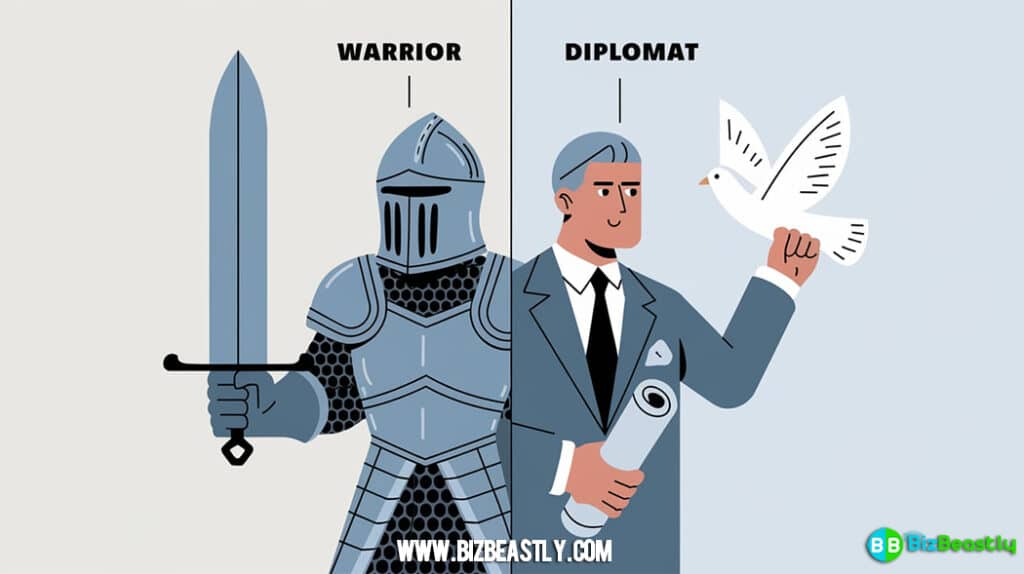
Compare vs Contrast in Language Comparison
Language is a rich and diverse system. Comparing and contrasting different languages gives us insights into their similarities and unique characteristics. In language comparison, linguists or learners use comparison to highlight shared features between languages. Contrast, on the other hand, uncovers distinct aspects that set them apart. This process is crucial for understanding how languages function. It also helps bridge communication gaps, translate texts, and even aids in learning a new language. Whether you’re examining English and Spanish or comparing dialects within the same language, the ability to compare vs contrast is vital. It plays an essential role in linguistic analysis by helping identify similarities and differences.
In comparative linguistics, researchers often compare two languages to uncover common structures. These may include sentence patterns, grammatical rules, or shared vocabulary. Language tools like these show how languages sometimes develop similarly. This can happen due to cultural exchange or shared linguistic roots. On the other hand, contrasting languages reveal their unique traits. These could be different grammatical rules, sounds, or artistic expressions. For example, many languages use similar sentence structures. However, they may vary significantly in word order, gender use, or how they express concepts like time and formality.
Scenario Example: Comparing English and Spanish
- Comparing: Both English and Spanish use subject-verb-object sentence structures.
- Contrasting: English lacks grammatical gender, while Spanish assigns gender to nouns.
By comparing and contrasting, we gain insight into how different languages function and how they are used in communication.
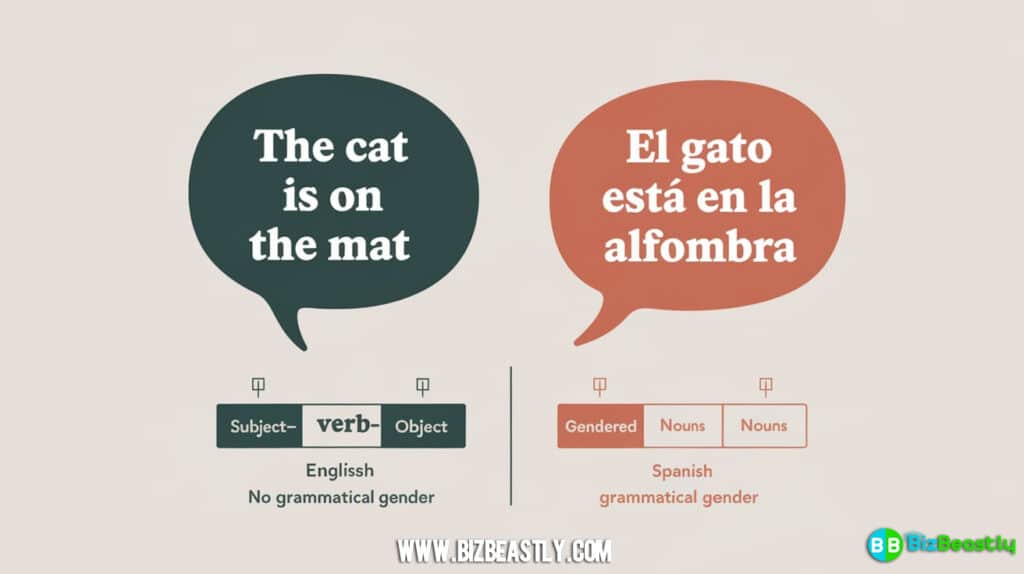
Real-World Applications of Compare vs Contrast in Decision-Making
The ability to accurately compare and contrast is essential in both academic writing and real-world scenarios. It plays a crucial role in situations where informed decisions genuinely matter. This skill is critical whether you’re choosing between products, evaluating services, or weighing multiple options. By comparing similarities and contrasting differences, you ensure that your choices are thoughtful and calculated.
In professional settings, comparing and contrasting is integral to marketing, product development, and strategic planning. We do it almost instinctively in our personal lives, from deciding which brand of coffee to buy to choosing the right insurance plan or even selecting the best job offer.
Comparing and Contrasting in Marketing and Customer Service
In customer service, representatives often have to compare different client plans or products. This allows them to present customers with options that share the same core benefits. However, when it comes time to contrast these options, agents must highlight the key differences, such as price, additional features, or premium services.
Scenario Example: Customer Service Support Plans
- Service Plan A: Offers 24/7 phone support and includes basic troubleshooting.
- Service Plan B: Offers 24/7 phone support but includes advanced troubleshooting, software updates, and priority queueing.
Comparing the two shows that both plans offer round-the-clock assistance, but contrasting them highlights that Plan B offers additional benefits, such as priority support and software updates.
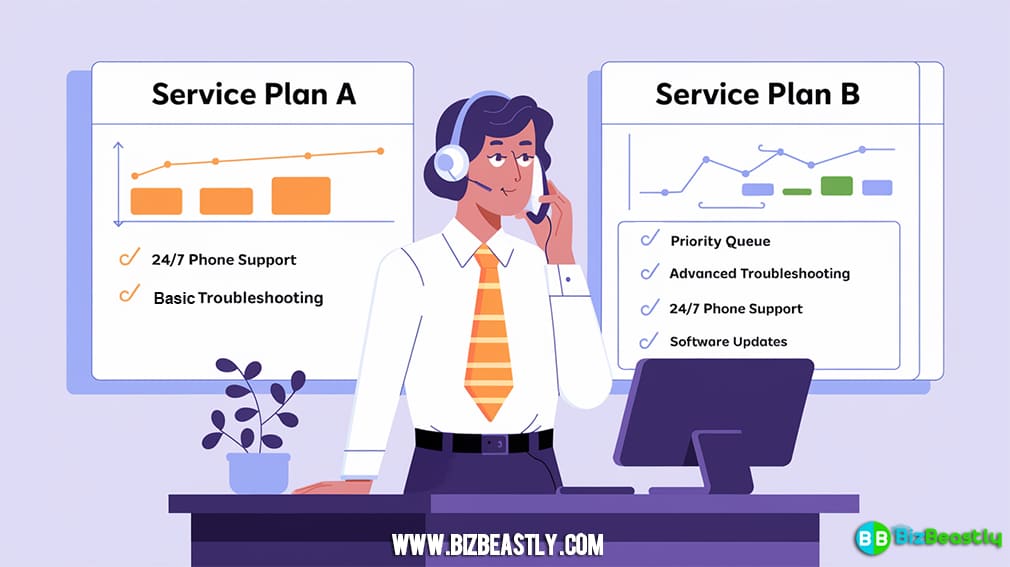
Using Comparison in Business and Marketing Decisions
In business, comparison is a critical tool in marketing strategy. When marketing a product, companies often compare it to competitors to show potential customers the shared benefits, such as price or visual display quality.
However, they also contrast the products by emphasizing what sets their offering apart—a better customer service experience or more innovative features like high-resolution cameras.
Clearer Understanding of Compare vs Contrast
To further simplify how compare vs contrast works, here are some practical examples across different fields, illustrated in tables.
Comparing Smartphone Features
| Feature | Smartphone A | Smartphone B |
|---|---|---|
| Camera | 12 MP high-resolution camera | 16 MP high-resolution camera |
| Screen Size | 6 inches | 6.5 inches |
| Battery Life | 4000mAh | 4500mAh |
| Operating System | Android | iOS |
Comparison: Both smartphones have high-resolution cameras, long battery life, and sleek designs.
Contrasting Smartphone Features
| Feature | Smartphone A | Smartphone B |
|---|---|---|
| Camera Resolution | 12 MP | 16 MP |
| Screen Size | 6 inches | 6.5 inches |
| Operating System | Android | iOS |
| Additional Features | Basic camera settings | Night mode and zoom capabilities |
Contrast: While both smartphones offer great camera resolution, Smartphone B provides
advanced photography options that Smartphone A does not, like night mode and zoom.
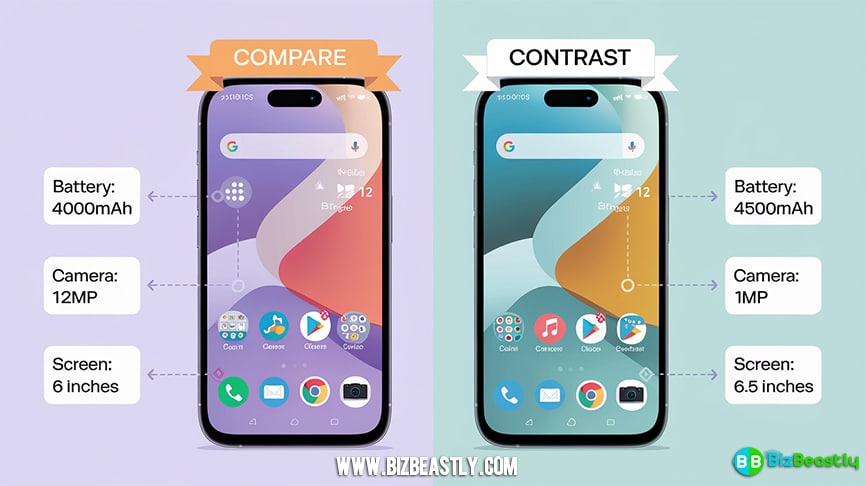
Comparing and Contrasting Decision-Making Tools
Whether you are writing a persuasive argument, choosing a vacation spot, or simply engaging in a casual talk, knowing when to compare vs contrast gives you a strategic advantage in communication.
Conclusion: Mastering Compare vs Contrast for Clearer Communication
It should be clear that understanding the difference between compare vs contrast can significantly improve your analytical skills and communication. These tools enhance your ability to write compelling essays and help you make better business decisions. Additionally, they play a crucial role in everyday conversations, helping you articulate thoughts more clearly and confidently.
From analyzing two characters in a novel to deciding which smartphone to buy, the ability to spot similarities and differences makes all the difference. And the more you practice, the better you’ll identify when to use compare vs contrast effectively.
In conclusion, always remember that comparison reveals what’s alike, while contrast uncovers what’s unique. Both are powerful tools for communication, decision-making, and problem-solving. Use them wisely in your writing, conversations, and analyses. Applying them strategically will improve your ability to express ideas clearly and make informed decisions.
Quick Summary: Compare vs Contrast
Compare vs Contrast refers to two different ways of analyzing items. Compare means finding similarities between two or more things, while contrast highlights their differences. For example, you might compare two smartphone features like camera quality and contrast their prices. This skill is useful in everyday conversations, literary analysis, and problem-solving. By mastering compare vs contrast, you can make better decisions and communicate more effectively, whether you’re discussing products, writing an essay, or weighing life choices.

I’m Anthony Smith, a language enthusiast here at Biz Beastly. My goal is to make English grammar simple and accessible for everyone. With years of experience, I break down tricky rules and offer tips to help you master the language and communicate confidently.

